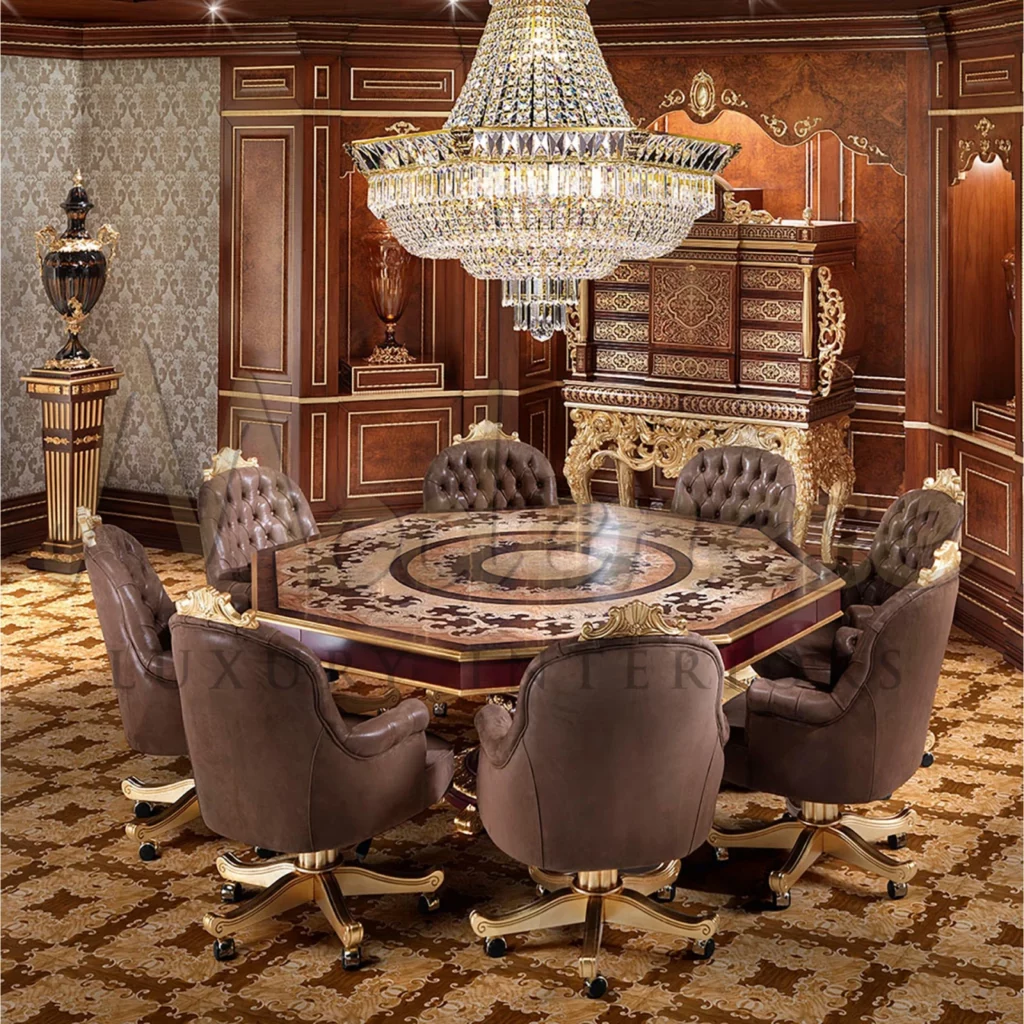The Timeless Appeal of Italian Baroque Furniture: A Guide to Modenese’s Masterpieces
The Grand Revival of Baroque Splendor
In the realm of luxury furniture, few styles capture the imagination quite like Italian Baroque. Born in the 17th century during a period of unprecedented artistic innovation, Baroque furniture from the Modena region of Italy represents the pinnacle of craftsmanship, artistic vision, and aristocratic refinement. Today, these masterpieces continue to inspire both collectors and designers, bridging centuries of design evolution while maintaining their distinctive character and allure.

Historical Context and Evolution
The Baroque period emerged in Italy during the early 1600s, marking a decisive shift from the restrained elegance of the Renaissance to a more theatrical and emotional artistic expression. Modenese Furniture artisans, in particular, developed a reputation for their exceptional ability to translate this new aesthetic into furniture pieces that would become the gold standard of European luxury.
The Rise of Modenese Craftsmanship
The city of Modena, situated in the heart of Emilia-Romagna, became a central hub for furniture making during the Baroque period for several key reasons:
- Strategic location along major trade routes
- Access to premium materials from both northern and southern Europe
- Patronage from the powerful Este family
- Concentration of skilled artisans and woodworkers
- Established guild system that maintained quality standards
Characteristic Elements of Baroque Design
Architectural Features
Modenese Baroque furniture is distinguished by its architectural approach to design, incorporating elements traditionally found in building facades and interiors:
- Broken pediments
- Twisted columns
- Dramatic cornices
- Pilasters with carved capitals
- Arched elements
Materials and Techniques
The following table illustrates the primary materials and techniques that define authentic Modenese Baroque pieces:
| Material/Technique | Description | Historical Significance |
|---|---|---|
| Walnut Wood | Primary wood choice for case pieces | Native to region, excellent carving properties |
| Gold Leaf | Applied through water gilding | Symbolized wealth and divine connection |
| Marble Inlay | Used for tabletops and details | Demonstrated technical mastery |
| Tortoiseshell | Applied through boulle technique | Exotic material signifying luxury |
| Brass Hardware | Hand-cast decorative elements | Enhanced durability and ornamental value |
Signature Ornamental Details
Carving Mastery
Modenese Baroque furniture is renowned for its intricate carving work, featuring:
- Acanthus leaves in various stages of unfurling
- Putti (cherub figures) emerging from scrollwork
- Shells and cartouches framing central motifs
- Grotesque masks at key structural points
- Flowing botanical elements

Gilding Excellence
The gilding techniques developed by Modenese artisans remain some of the most sophisticated in furniture history. Their multi-step process included:
- Initial wood preparation with gesso
- Application of bole (colored clay)
- Water gilding with 23.75k gold leaf
- Burnishing to different levels of shine
- Selective distressing for depth
Modern Adaptations and Contemporary Appeal
Revival Techniques
Today’s master craftsmen in Modena continue to produce Baroque-inspired pieces using a combination of traditional and modern methods:
- Computer-aided design for initial planning
- Traditional hand-carving for detailed work
- Modern finishing products for enhanced durability
- Sustainable wood sourcing practices
- Updated upholstery techniques for comfort
Market Presence and Investment Value
The enduring appeal of Modenese Baroque furniture is reflected in its strong market performance:
- Original pieces regularly achieve 6-7 figure prices at auction
- Contemporary reproductions command premium prices
- Growing demand in emerging luxury markets
- Increasing interest from younger collectors
- Strong appreciation potential over time
Identifying Authentic Pieces
Key Authentication Factors
When evaluating Modenese Baroque furniture, experts consider several critical factors:
| Feature | Authentic Characteristics | Warning Signs |
|---|---|---|
| Wood Type | Italian walnut with consistent grain | Mixed wood types, inconsistent quality |
| Construction | Hand-cut dovetails, period-appropriate joints | Machine-made joints, modern fasteners |
| Gilding | Water gilding, authentic wear patterns | Bronze powder, artificial distressing |
| Provenance | Documented history, regional signatures | Unclear origins, missing documentation |
The Future of Tradition
The legacy of Modenese Baroque furniture continues to evolve while maintaining its core principles of excellence. Modern artisans in Modena are embracing new challenges:
- Integration of smart home technology
- Development of eco-friendly finishing techniques
- Creation of scaled versions for urban spaces
- Adaptation to contemporary lifestyle needs
- Preservation of traditional craftsmanship
The enduring appeal of Modenese Baroque furniture lies not just in its ornate beauty, but in its ability to transcend time while maintaining relevance. Whether in a historical palace or a contemporary apartment, these masterpieces continue to command attention and admiration, serving as testament to the timeless nature of exceptional craftsmanship and design. As we move forward, the tradition of Modenese Baroque furniture making stands as a bridge between our artistic heritage and future innovations in luxury furniture design.